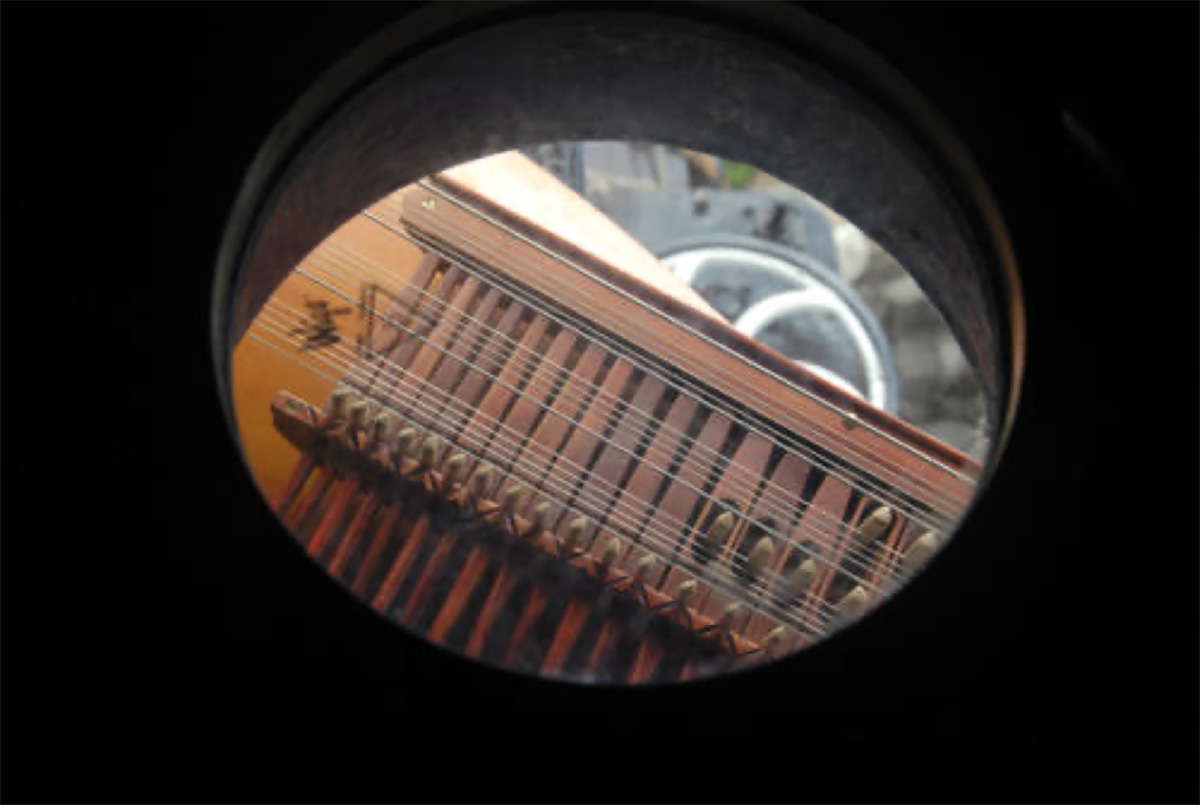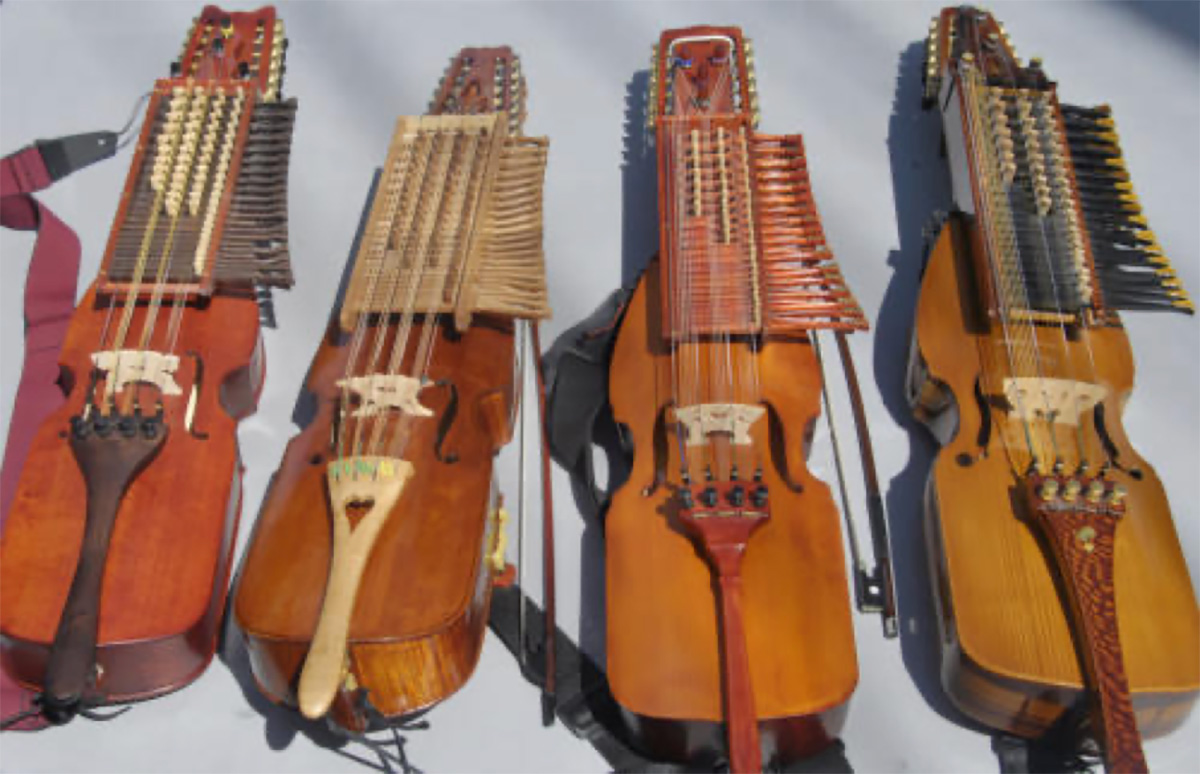The nyckelharpa is a string instrument with two extraordinary properties, which together make a unique sound possible. The pitch is not determined by pressing the fingertip on a well-chosen place on the string. This technique, which we know from the violin family and many other stringed instruments, has made way for a mechanism whereby tangents - wooden sticks that are perpendicular to the strings - are pressed against the string. The player presses keys with their fingers, which are located on the side of the neck of the instrument. The tangents are mounted on these keys. We also know this system from the hurdy-gurdy. But unlike the hurdy-gurdy, the strings are struck with a bow (in the hurdy-gurdy this is a wheel that is rotated under the strings). The nyckelharpa has four playing strings, which are often tuned approximately the same as the viola. The playing position is very similar to that of the medieval fiddle.
The nyckelharpa

The clear sound created by the tangent system is given a beautiful extra dimension by a second feature of the nyckelharpa. In addition to the four strings that can be strung, there are another twelve strings running across the instrument, tuned to the twelve semitones ("chromatic series") that our Western music system places in an octave. These strings, called resonans strings, automatically sound when the musician plays a note. If he strings a C, the resonans string tuned to C will sound along, at D the D resonans string will sound along, and so on. We know such strings from, among others, the viola d'amore (where they are often called "sympathetic strings"), the Norwegian Hardanger violin (Harding fele) or the Indian Sarangi. But in combination with the tangent system, an unprecedented spatial sound is created.

The tangent system - seen through a porthole of the Noordvaarder in Harlingen
The Swedish Nyckelharpa has tangents for the three highest of the four playing strings. The lowest string is only used separately. This is a remnant of older Nyckelharpa types from Sweden. The oldest instruments had two or three strings, with the lowest string serving as a bourdon (such as the drones, the humming pipes, of a bagpipe). From the middle of the 20th century, the nyckelharpa was further developed in Sweden into a chromatic instrument with four strings, including the bourdon string. Around 1980 this development was complete…..at least in Sweden! But when the nyckelharpa began to attract attention outside Sweden around that time, builders in other countries seized the opportunity to develop this instrument even further. The number of keys ("keys") was further expanded and the low string often also received a row of tangents. At the same time, soprano harpas (tuned like violins) and bass harpas (like cellos) appeared on stage. These developments went hand in hand with a strong spread of nyckelharpas across Europe and America. Currently, teaching centers and organizations that focus on the instrument can be found not only in Sweden, but mainly in Germany, Italy, Belgium, France and the US. At the same time, the repertoire is gaining great diversity, although Swedish music still occupies an important position.
